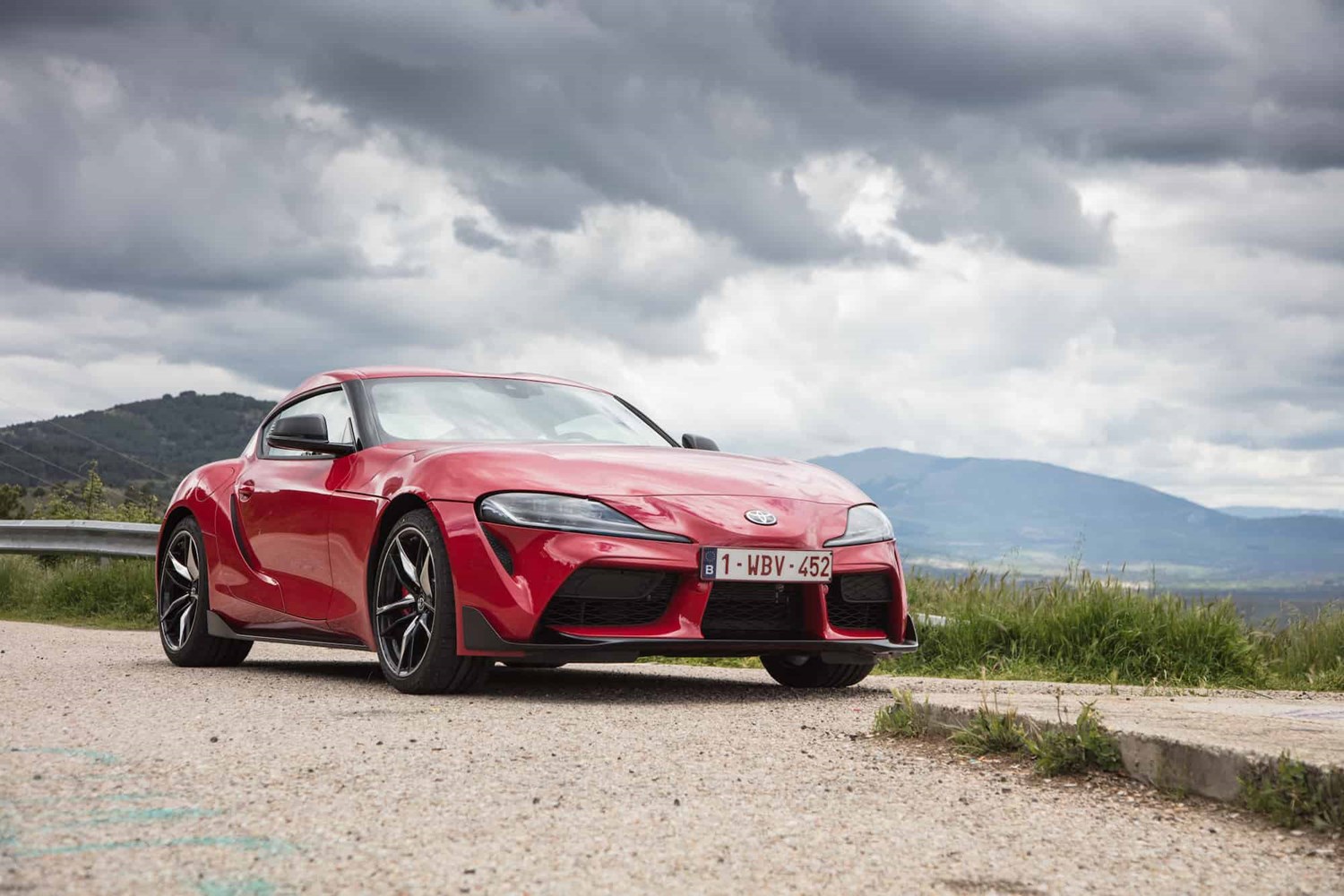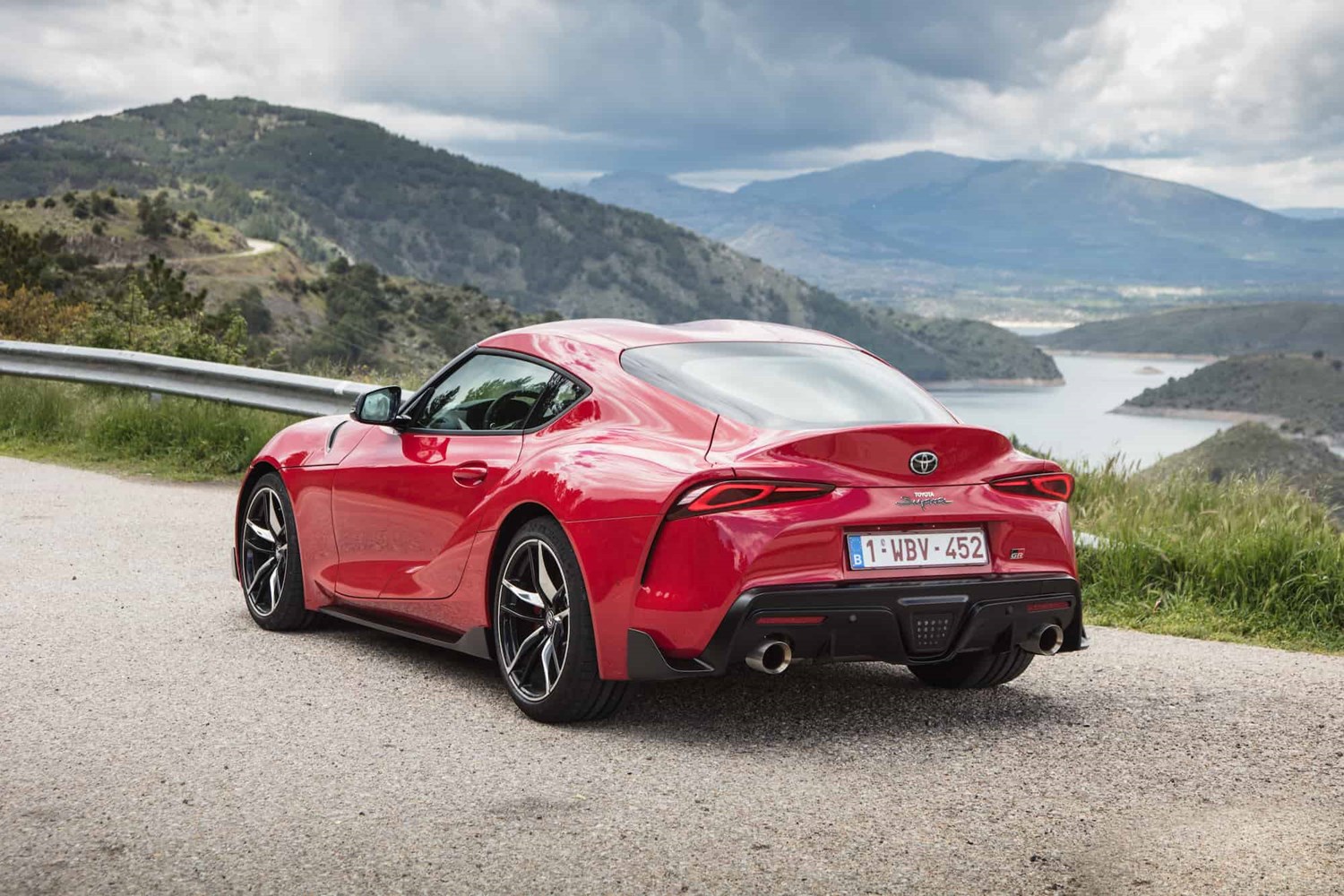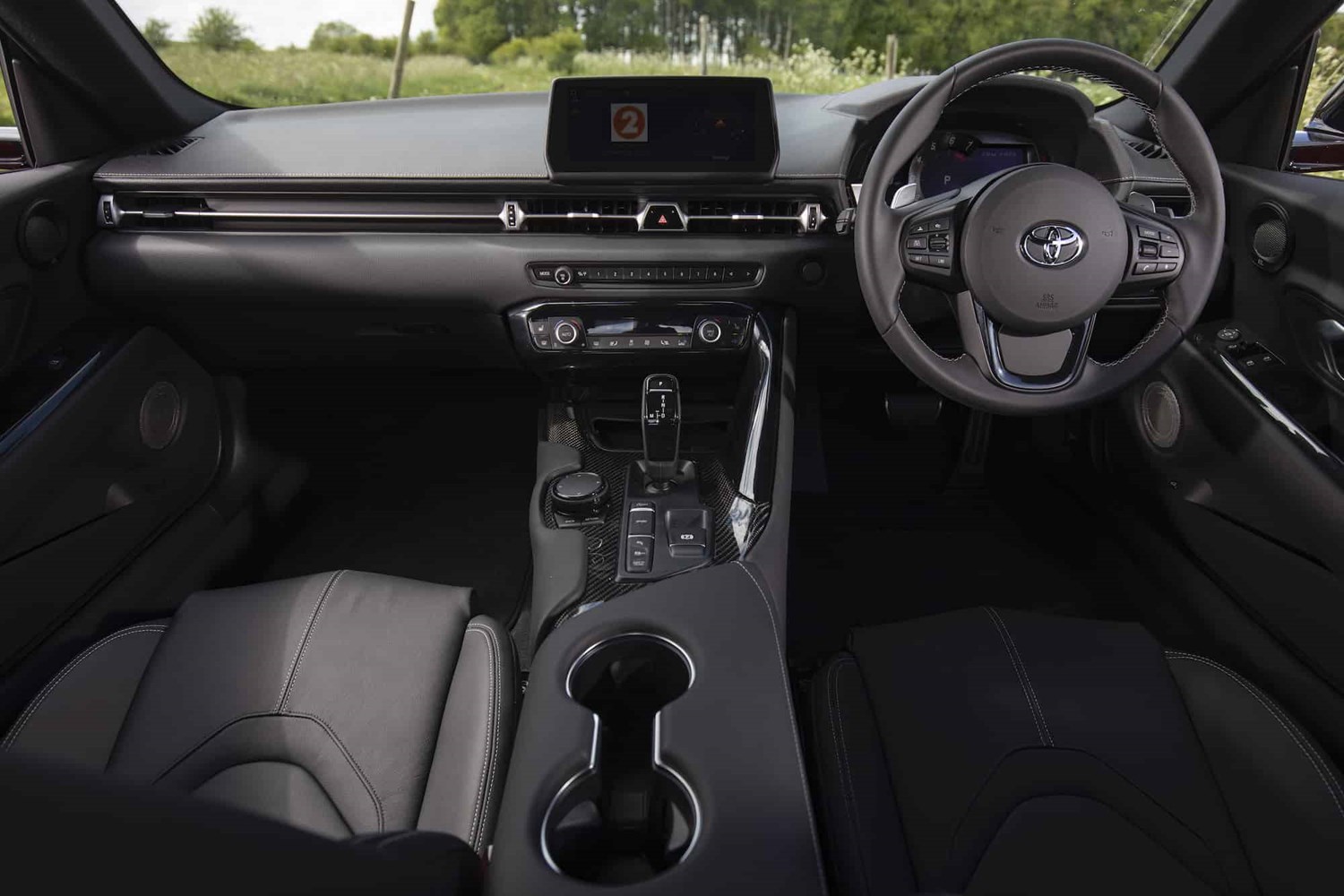Model review
The first-generation Toyota Supra began production in 1978 as a more powerful version of the Celica sports car. This grand tourer was built to compete with the segment-dominating Datsun Z cars of the time and featured a six-cylinder engine, compared to the Celica’s four-cylinder.
In 1981, the second-generation car arrived, sporting a new look. Although still based on the Celica platform, there are some notable differences such as an altered front-end design and a longer wheelbase (to accommodate the Supra’s larger engine). The model became available for the first time in Europe in 1982, although the UK only received a limited supply of just 100 cars per month.
For the third-generation iteration, the Celica and Supra went their separate ways, becoming completely different models. The former switched to a front-wheel-drive setup, while the latter stuck to rear-wheel-drive.
And now we come to the icon – the fourth generation Supra. Beginning production in 1993, this is one of the all-star performance cars of the ‘90s. It’s the motor all enthusiasts remember from the likes of Gran Turismo and The Fast And The Furious. Not only that, but it’s also a renowned tuner car, thanks to their inline-six powerplants having immense potential when it comes to upping power.
With the fourth-gen model going out of production in 2002, Supra fanatics had to wait until 2019 for the legendary nameplate to return. As you can imagine, the highly-anticipated new one has a lot to live up to and needs to properly impress in order to satisfy those fans who’ve been eagerly waiting for almost 20 years.
Current model
As mentioned before, the current Supra arrived in 2019. It also caused a bit of a stir in doing so. The new Supra isn’t completely a Toyota product – a lot of parts, including its 3.0-litre turbocharged inline-six powerplant, were supplied by BMW. This has resulted in much bickering about whether it’s truly its own vehicle or just a restyled BMW Z4 – a car the Supra shares a lot of components with.
But, with that covered, let’s leave the controversy behind and judge the car for what it is – a boldly styled front-engined, rear-wheel-drive, two-seat sports car; and quite a quick one at that. It’s six-cylinder engine produces a claimed 335bhp, although reports of stock Supras making more than Toyota advertise – around 371bhp – aren’t uncommon.
Out on the open road is where the Supra really shines. Despite weighing 1,495kg, the model’s remarkably agile and quick to turn in. Sure, the weights noticeable, especially when compared with the featherweight Alpine A110, but it’s not a significant issue. It also stays very composed over bumps and imperfections in the road, making it a proper B-road hero – meaning the Supra feels very polished to drive.
Value for money
New Supras start at £52,695, which, for a Toyota is pretty expensive. In fact, it’s currently one of the priciest models in the manufacturer’s line-up; coming in second to the Mirai Hydrogen Fuel Cell Electric Vehicle. Compared to rivals, however, it is similarly price. For example, there’s the £46,900 Alpine A110 and £44,790 Porsche 718 Cayman.
Unfortunately, there aren’t many bargains to be had on the used market either. Cheapest one’s go for around £12,000 at the least – that’s for a ‘90s model with the less desirable automatic transmission. For one with a manual gearbox with the highly sought after and highly tuneable engine you’ll be looking at circa £50,000 in some cases.
Looks and image
The Supra’s styling is sure to divide opinion, but we think it looks great. It stands out and has a real presence on the road. It’s got such a muscular stance and is stunning in brighter colours, meaning it’s sure to turn more than a few heads. The interior is less dramatic than the exterior, but is a cool place to be, nonetheless. The digital gauge cluster, which replaces traditional dials, is especially interesting as its design is both futuristic yet retro, nicely suiting the car’s aesthetic.
Space and practicality
This isn’t a family car, so people thinking they can go for a family holiday in it will be disappointed. It’s strictly a two-seater with a compact boot after all. That being said, for a sports car, it’s reasonably practical. With a 290-litre boot, it’s got about as much strorage space as a city car or small supermini.
In terms of passenger space, the Supra is good. Even taller people should be able to get comfortable, so no complaints there.
Engines
Currently in the UK, the Supra is equipped with one engine and one engine only. The ‘335bhp’ 3.0-litre inline-six motor is, as of this being written, hooked up to an eight-speed automatic gearbox – there is speculation surrounding a manual option though. Japanese models are also offered with a 2.0-litre.
With that straight-six sending power to the rear wheels, the Supra is able to crack 0-60mph in a claimed 4.3 seconds. Again, we say claimed because there are reports of it actually doing it in 3.8 seconds. Top speed is said to be 155mph.
Running costs
Being a sports car, the Supra won’t get the best fuel economy figures, but with a claimed 34.4mpg and 170g/km of CO2 emissions, it’s pretty good for the class. Considering a lot of performance cars similar to it often get fuel economy figures of around 25mpg, the Supra shouldn’t break the bank. Just make note that the 34.4mpg mentioned before will be hard to hit, especially if you’re driving it the way it’s designed to be.
Things to look out for
The latest Supra model is still a young one, meaning judging its long-term reliability is a tough task. Toyota as a brand, however, is known for its dependability, with few owners identifying faults within the first year of ownership in reliability surveys. How this all works with the BMW parts may complicate the car’s reputation, for better or worse, but the Supra should serve buyers well.
Rivals
The Supra has quite a few competitors, with the first coming to mind being the excellent Alpine A110 and Porsche Cayman – these are a couple of two-seat sports class that have really impressed the critics, making them key class leaders. And even though the Supra can’t match the finesse and precision of those cars, it makes up for it in brute force and fun. Which is the best may just come down to personal taste. Other rivals to note include the fiery Ford Mustang and rapid Audi TT RS.
Depreciation
The new Supra has proven quite popular at the moment, meaning you won’t see any used ones below the list price. The older ones shouldn’t depreciate much any time soon either, meaning depreciation is an area were the Supra suffers no issues. If anything, the previous iterations of the Supra, if kept in good condition, should only go up in value. As for the new one, while it holds its value extremely well at the moment, it should start to lose value as they become more commonplace.





